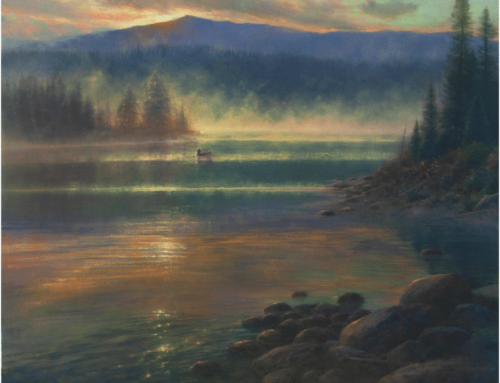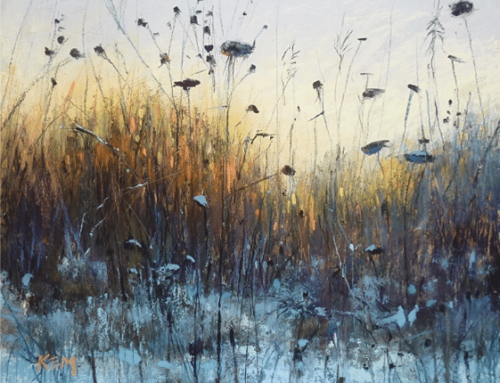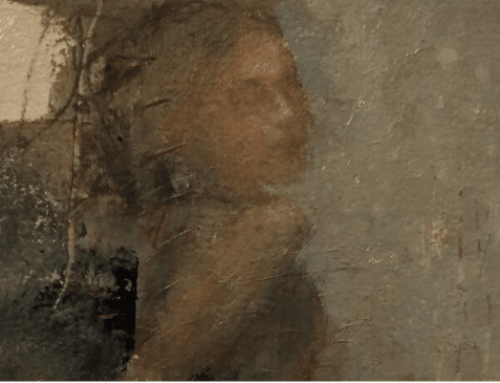By Guest Contributor John Pototschnik
“Don’t worry about your originality. You couldn’t get rid of it even if you wanted to. It will stick with you and show up for better or worse in spite of all you or anyone else can do.”
― Robert Henri
The first 10 years of my professional art career were spent as a freelance illustrator. It was slow going at first. I spent considerable time developing a direct mail advertising campaign. Post cards promoting my work were sent out every three weeks to ad agency art directors, ad design firms, and freelance designers.
Assignments slowly started to come in, nothing special, but lots of pen and ink spot drawings. Being new to the field, I was insecure and lacked confidence. As the years progressed, those insecurities diminished somewhat as some really nice jobs came in. Eventually most of the assignments were in full color, done with acrylic.
The illustrators that gained national reputations had distinctive styles. Some of those styles were authentic to the artist, but many were contrived, just to be different and gain recognition.
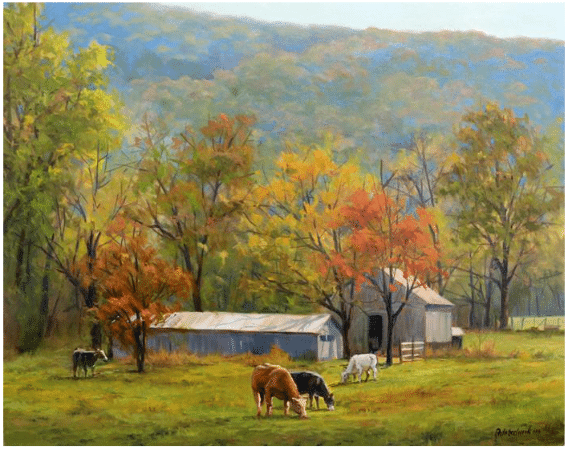
John Pototschnik, “Boxley Valley,” oil, 24 x 30 in
I fell into the latter category for a short time, copying the style of noted artists. Submitting those samples to New York reps, only resulted in a discouraging reply, “Your work looks like everyone else.” Although I made a good living as an illustrator, I never excelled; I was never recognized or assigned a particular job because of the uniqueness of my work. I was basically a “utility player.”
Only when I left illustration to pursue a career in the fine arts has my authentic self come out…and that too has been a slow process. I found the following excerpt in an “The Artist”, October 1931 article. I don’t agree with all of it, mainly the part that a timid, shy personality is incapable of painting bold, robust paintings. I totally agree that one’s personality and temperament play a key role in selection of subjects and the way they are painted, but one’s culture, maturity and skill level also contribute:
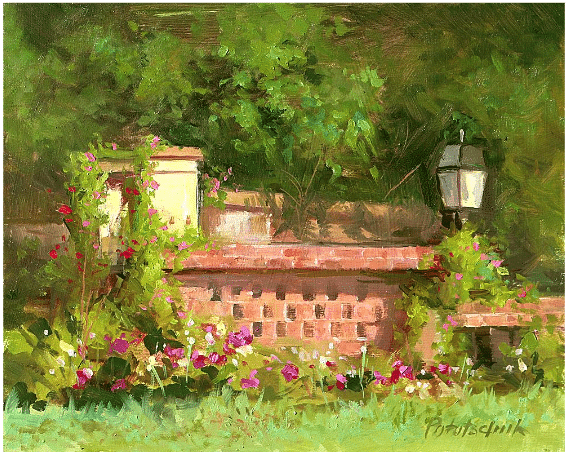
John Pototschnik, “Wallflowers,” oil, 8 x 10 in
I guess, if I had one bit of advice, it would be to not worry about creating your personal style. Do the work, study, improve your skill, paint what you love, but paint, paint, and paint some more….and eventually you’ll hear…”I can recognize your work from across the room.”
“Technique in any medium is the artist’s handwriting. It is, or should be, something which is entirely his own; individual and characteristic technique cannot be taught, but will develop through practice according to personality, as children taught at school to write from the same copybook will, in after years, develop their own individual style in accordance with their nature.”
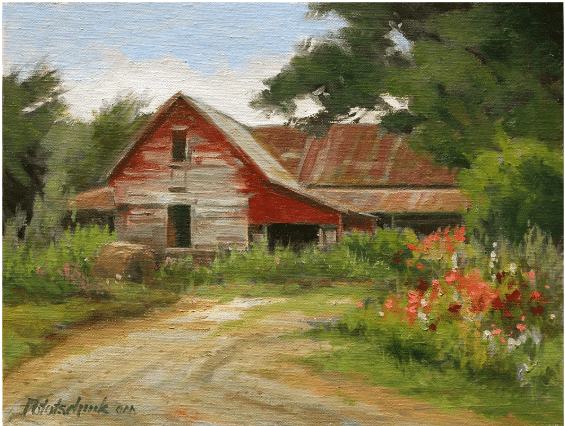
John Pototschnik, “Life’s Way,” oil, 9 x 12 in
“To any student of graphology, it is a simple matter to discern the character of a stranger through his handwriting; the writing of a shy and retiring person will present quite different features to that of a forceful self-assertive nature. So in painting, a gentle quiet personality is not likely to get a very vigorous touch, but he may outshine in delicacy of handling, that which the more robust person lacks, each having his own merit and not competing one with the other.
“Every student should aim at developing his own technique, he will then have a valuable asset in that his work will have a distinction which belongs only to him, and later, when he exhibits in galleries, his work will be recognized even if he has forgotten his signature.
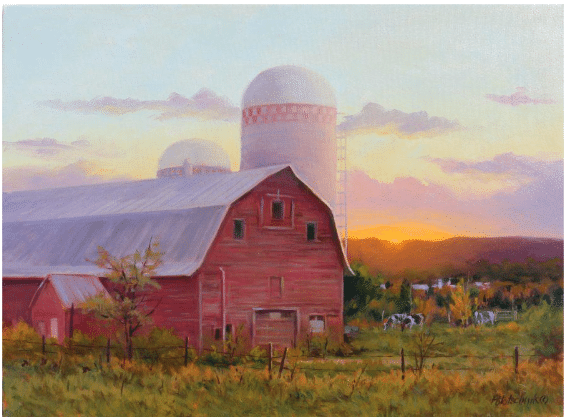
John Pototschnik, “American Icon,” oil, 18 x 24 in
“Although a personal technique cannot really be taught, the student can get much help in the study of the work of other painters, and for the beginner it is not a bad idea to spend a little time in copying the work of some artist whose style he admires in one of our public galleries, not necessarily slavishly copying a whole picture, but taking a part of it, simply for the exercise in brushwork. This will help to give him facility and assurance in his own work and then gradually, step by step, by constant practice, and not by worrying overmuch as to ‘how’ he is doing it, he will slowly and almost unconsciously develop a style of his own, without which no artist can hope to rise above mediocrity.” – “The Artist” – October 1931
My artistic influences are diverse, ranging from the Barbizon painters of Corot, Daubigny and Millet to the American tonalist, George Inness. I believe all I need to know of the principles of art are to be found in the works of the masters. My paintings are not flamboyant, mysterious, trendy or shocking but I am interested in depicting the truth about life, as I see it, in a naturalistic way free of frills and bravado.
I enjoy depicting simple, common, everyday life and its objects as things of beauty and worth. I intend to show the dignity and value of the subjects I paint – just as my artistic influences have. Through continued hard work I want to give to society paintings that transcend the culture and it’s ever changing tastes. . . paintings that speak to the heart.
John Pototschnik is an Art Renewal Center Living Master, a Signature member of the Oil Painters of America and a Master Signature Emeritus member of the Outdoor Painters Society. See more of his work at pototschnik.com <<https://www.pototschnik.com
John Pototschnik is known for the ability to make just about “unlimited color from a limited palette” (to quote the title of one his books. John has a down to earth teaching style and several very popular workshop videos to browse through here.


